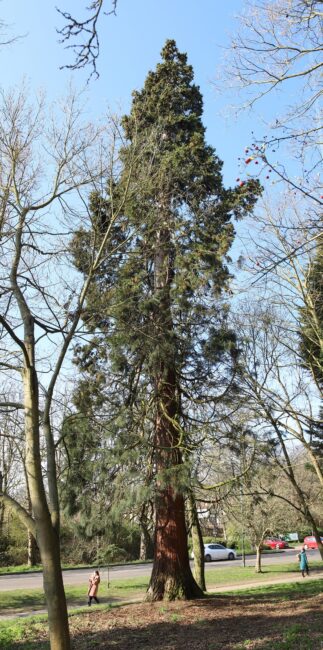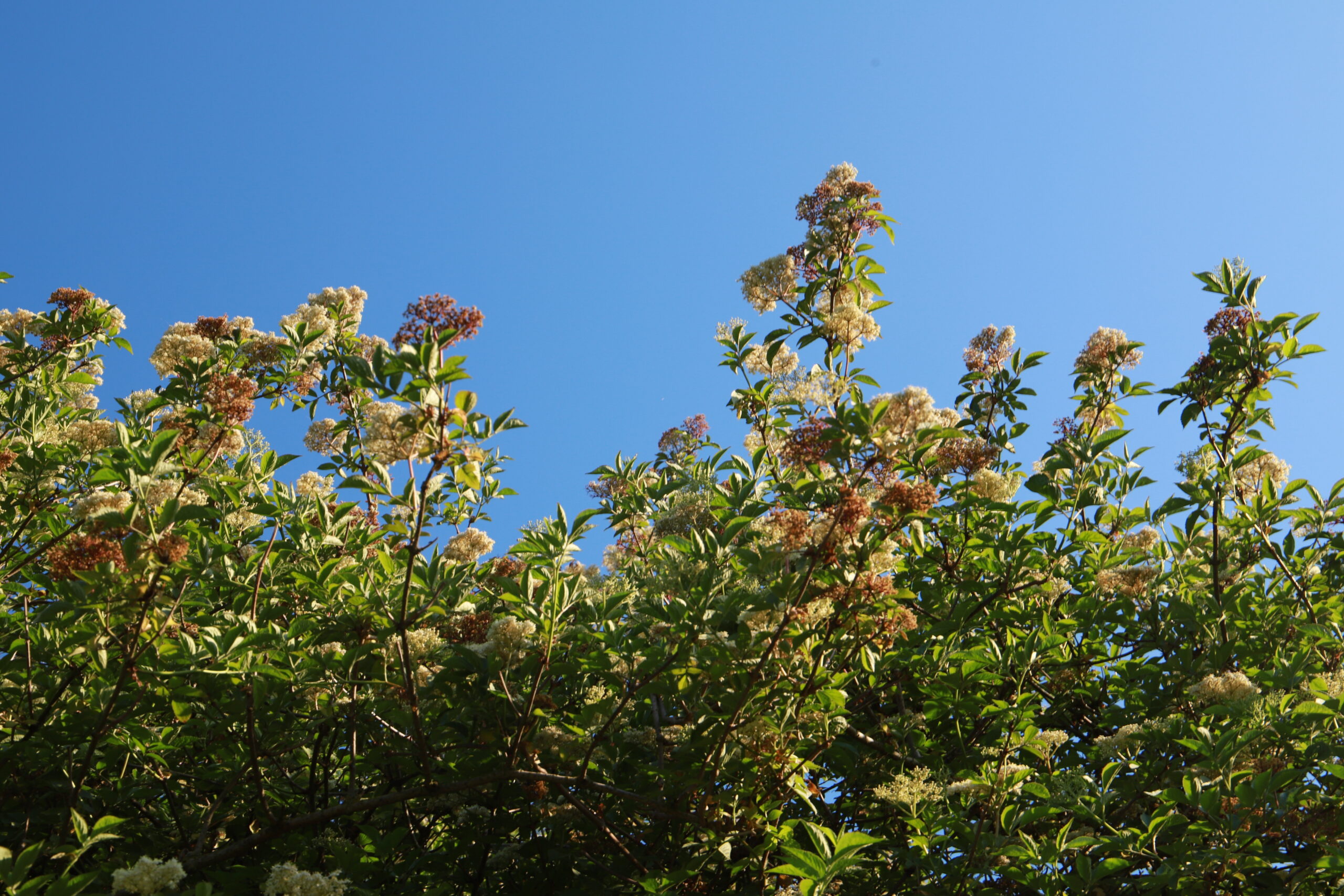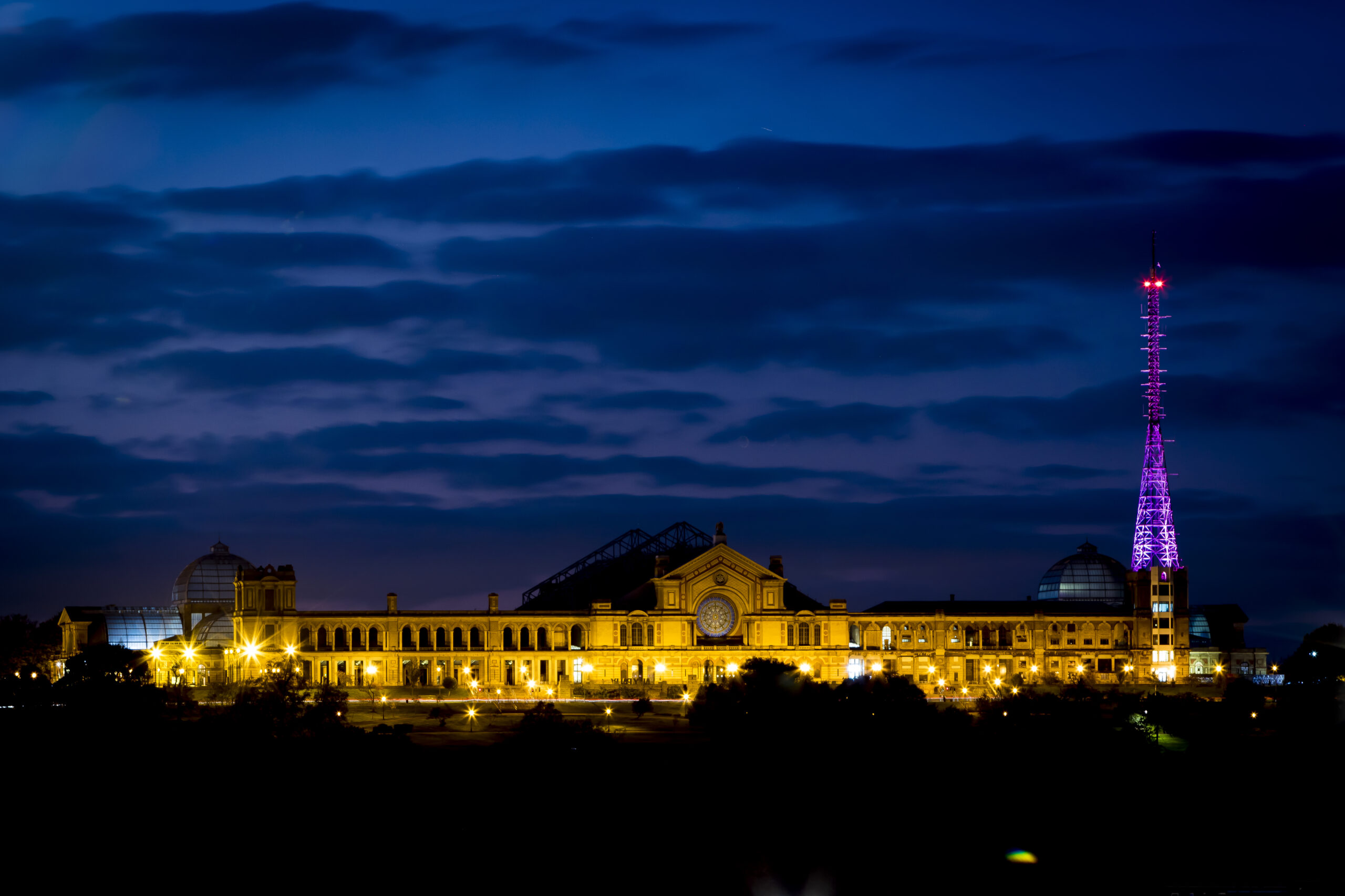The Park is home to 694 different types of plants, animals and fungi, including 212 different types of insects and 26 types of arachnids! It’s also got over 7,000 trees and Stephen Middleton from the Friends of Alexandra Park is kindly introducing us to some of his favourites…
The tallest tree in the park is our tree of the month. It goes by a few names; Giant Sequoia (Sequoiadendron giganteum) and Giant Redwood being just two. In England it is also called Wellingtonia in honour of the Duke of Wellington (Battle of Trafalgar victor) whereas in the United States it is sometimes simply called the Big Tree. This name is particularly appropriate as, although these trees don’t grow as tall as their relative the coastal redwood, they are more massive and can be 1,000 tonnes in weight.
Our giant sequoia is located near to Alexandra Palace Way where the road down to the Paddock Car Park forks off. If you are not sure which tree it is? Look up!

(a tall photo for a tall tree!)
Our tree of the month does not quite climb up to Olympic heights, but reaches to about 26 metres. A second, shorter tree stands, nearby.
This tree is a conifer – one of the more ancient forms of tree. It has scaly looking leaves which it keeps throughout the year, although individual leaves are always being shed – look on the ground below the tree. The redwood name is a reference to the colour of its bark which is springy and stringy. Try giving it a gentle punch. This bark protects the tree from forest fires as long as the temperature is not too extreme.
The flowers that it produces are quite small and inconspicuous. Like all conifers, the male and female flowers are separate – in this case they are on the same tree.

Once the female flowers have been pollinated, over the next couple of years they develop into distinctive large cones. They appear to have “lips”, this is a feature that the giant redwood has in common with both the coastal and dawn redwoods.
Most of the wild trees were felled by early settlers to the west coast of the United States. Considering their size, it is somewhat ironic that one of the main uses for the timber was for matches as the wood is not very hard or durable. Now most of the largest trees are protected in national parks. The region where they flourish is the Sierra Nevada mountains of California.
Only brought into this country in the early 1850s, they have not yet had a chance to grow to their full height and the tallest one at present is about 60m high and can be found at Longleat.
Although our tree is quite a long way down the road from the terrace of the Palace, it reaches up high enough to be clearly seen when looking along from the Palm Court.





